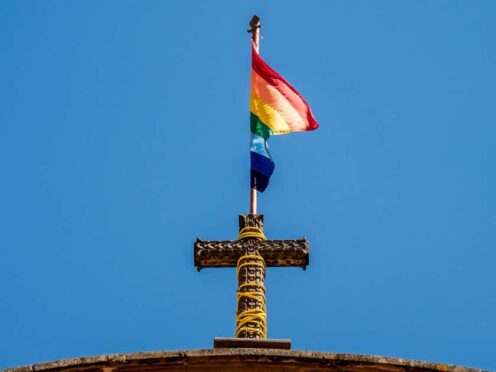An apology has been made at the Church of England’s General Synod for a perceived transphobic comment in which a member referred to “he, she or it”.
Lay member Daniel Matovu had been speaking during Monday’s debate on continued work around church blessings for same-sex couples.
In a speech Mr Matovu said a common doctrine is important and something on which the unity of the church is based.
He said: “Do we want to be the generation of which future generations say ‘In those days England had a King and each bishop taught as he, she or it saw fit’?”
At that point some rumblings of discontent could be heard among other members gathered at the meeting in York.
The Bishop of Newcastle Helen-Ann Hartley posted on X, formerly Twitter, that she had been “dismayed” by the remark.
She wrote: “Dismayed that a speaker in @synod referred to ‘he, she or it’. That is completely unacceptable whatever theological view you hold.”
Another person posted: “I really hope that wasn’t the outright transphobia it seemed to be.”
Mr Matovu issued a public apology on Tuesday, insisting he had never intended to cause offence as he vowed he would “not repeat this error ever again”.
He said: “I am absolutely devastated that I appear to have caused a great deal of hurt by the use of language which has been taken to be inflammatory or derogatory.
“I can assure you that it was never my intention to cause any offence in that way. I am truly sorry for any pain or hurt that I have caused.
Dismayed that a speaker in @synod referred to ‘he, she or it’. That is completely unacceptable whatever theological view you hold. I am glad that in @NclDiocese we are seeking to appoint a chaplain who will build a team to support LGBTQI+ people 🙏 https://t.co/yLHEPXAV3b
— Bishop of Newcastle (@BishopNewcastle) July 8, 2024
“The point I was seeking to make in my speech was not in fact aimed at any LGBTQ+ person at all. I totally respect and value all persons no matter what their sexuality.
“The point I was trying to make was about teaching contradictory doctrine. I appreciate that I did not need to include any pronouns in the sentence that has caused so much offence, and I certainly did not mean to do so in a derogatory way.
“I did not immediately appreciate that it was the LGBTQ+ community whom I had offended, rather than the bishops whom I was blaming for their contradictory teaching.”
At the end of the debate on Living in Love and Faith – covering work within the church in relation to matters of identity, sexuality, relationships and marriage – Synod members voted to approve a motion which included a request to the House of Bishops that restrictions on using same-sex blessings prayers in standalone services are removed, alongside “pastoral reassurance” for clergy who do not wish to carry them out.
In February 2023, Synod voted in favour of offering blessings to same-sex couples in civil partnerships and marriages after a marathon debate across two days.
In December the first same-sex partnerships received blessings as part of wider services, but some have argued that blessings should be allowed to take place at standalone services rather than only during regular public worship such as the Eucharist or Evensong, while others remain opposed.
The matter will come before Synod again in February, by which time an update is also expected from a special commission which is carrying out a theological feasibility study around clergy in same-sex civil marriages.
